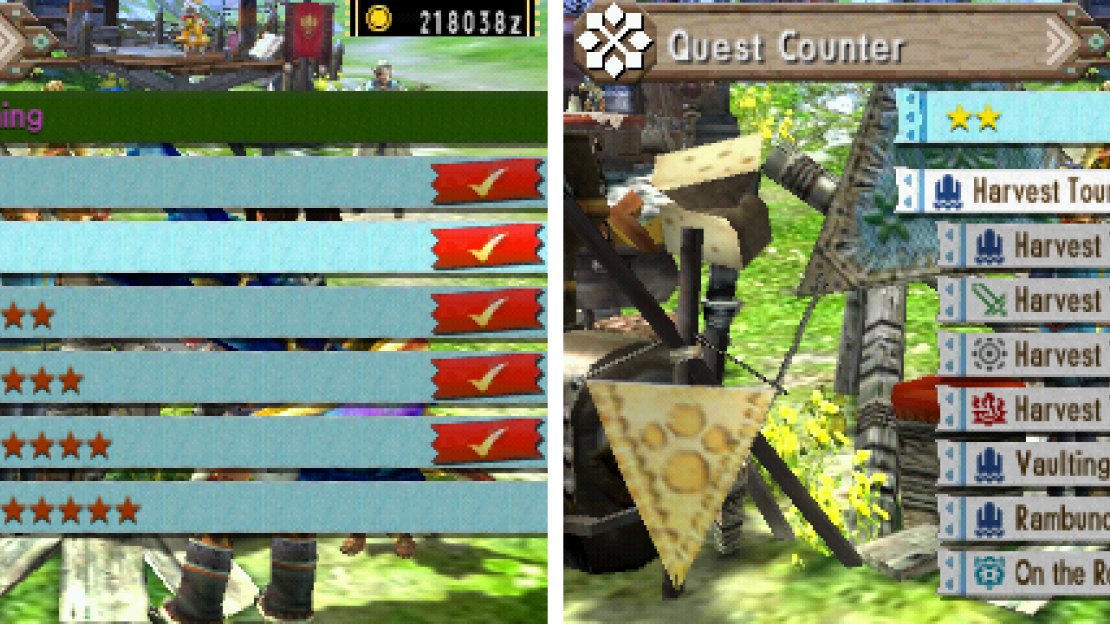Here is the menu for the village quests.
Quests are tiered in different levels. On their most general level, quests are broken into High Rank and Low Rank (in descending order, of course).
The different ranks of the quest will determine difficulty, obviously, but how so, you’re wondering? The most obvious difference between Low and High Rank is the health of the boss class monsters. Not only for difficulty purposes, but to compensate for more powerful equipment, monsters in higher ranks have higher health. They will also hit for much more damage, mandating that you have the respective armor, and have beefier defense. High Rank monsters often gain new attacks. Their movement might also be sped up, just to make life more difficult.
Even within Low and High Rank themselves, quests in a higher star difficulty will, obviously, be more difficult and mandate that you consistently upgrade and make new equipment and armor to keep up with the times.
To move up a star, you must complete specific Key Quests . No, you don’t have to 100% the entire list of 1* quests but it’s not a bad idea to do so for the practice and rewards. After you have completed the key quests, an Urgent Quest will pop up. This is going to feature an objective much more difficult than the star itself, and is actually one star above the quest tier you are currently at. It is meant to test your skills. Complete the urgent quest, and you will unlock the next star of quests (which the urgent quest will then join as part of that list for you to farm if you need to).
The village solo campaign does not have a true High Rank. All of High Rank is concentrated within the Hunter’s Hub. However, the Advanced Quests that show up in the village final tier have monsters who have High Rank power and rewards.
Special Permit quests, which have their own system of leveling up and management, have their own section.

No Comments